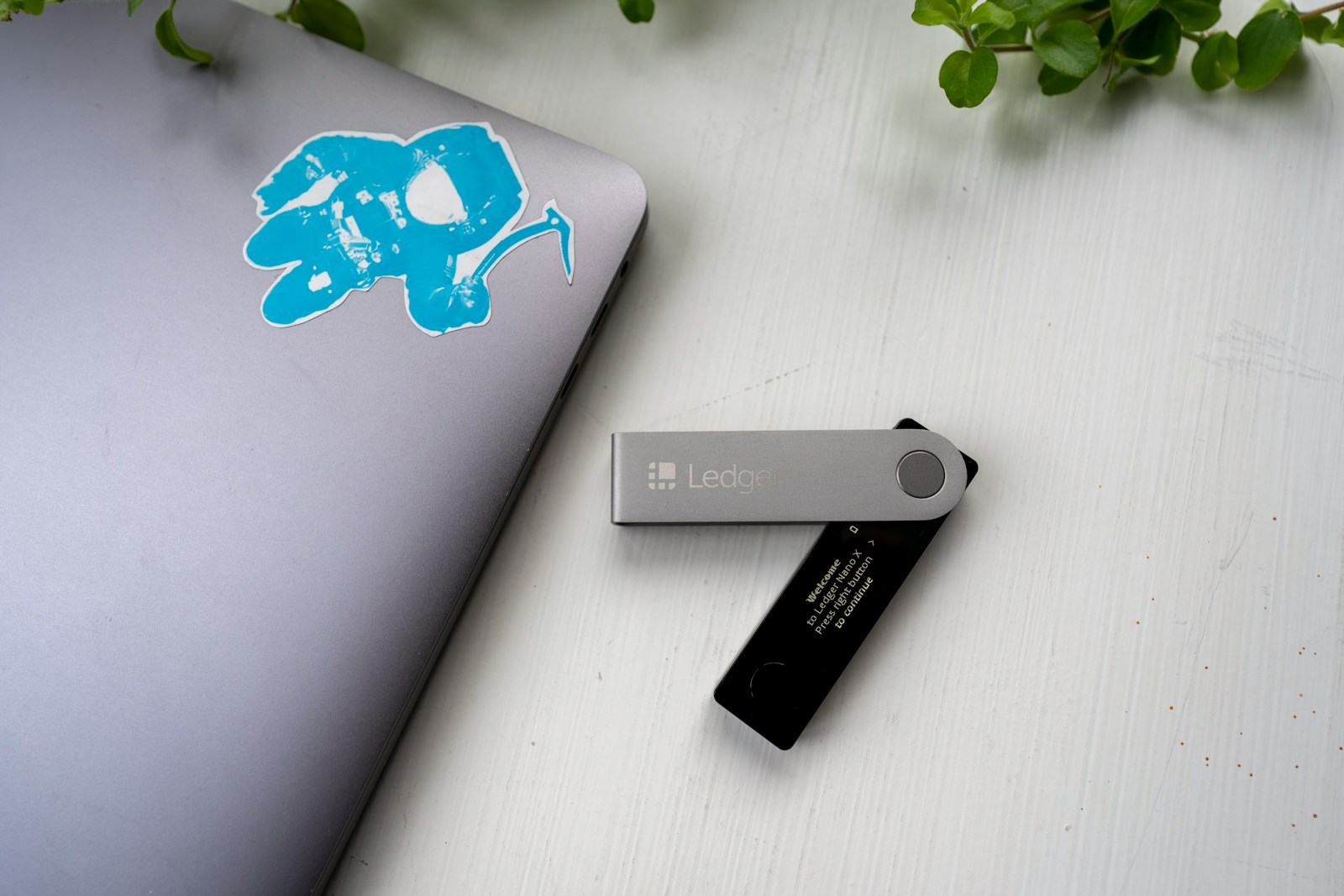
Never send assets to a contract without thorough code analysis. Malicious developers exploit subtle vulnerabilities embedded in decentralized ledger applications to create deceptive traps. These mechanisms lure investors or users into depositing tokens, only to lock them permanently. Such exploits rely on intricate flaws within the programming logic, causing unsuspecting victims to lose control over their digital holdings.
One notable example emerged in 2023 when a single deceptive blockchain address accumulated over $2 million in locked cryptocurrency within hours. The culprit was a contract that appeared open for withdrawals but contained hidden conditions preventing fund recovery. This scam capitalized on errors in permission management and fallback functions, which are common pitfalls during development yet often overlooked during audits.
Understanding these pitfalls requires a precise look at how transaction flows interact with contract state variables and modifiers. Attackers embed misleading return values or complex conditional statements that convince users their transfers succeeded while silently blocking any exit path. Some codes mimic legitimate project functionality, making manual detection challenging without automated tools designed specifically for vulnerability scanning.
Given the rising volume of decentralized finance projects–over 30% growth in new deployments last quarter alone–the risk of encountering such financial snares increases correspondingly. Professionals recommend integrating static and dynamic analysis tools before engaging with unfamiliar protocols, combined with verifying source code transparency and community feedback. Are you confident your interactions avoid these engineered dead-ends?
Honeypot contracts: smart contracts that trap funds [Wallet & Security security]
To avoid losing assets to deceptive blockchain schemes, users must scrutinize the underlying code for hidden pitfalls. These fraudulent digital agreements often appear lucrative but embed logic flaws or intentional traps preventing withdrawal after deposit. Identifying such malicious constructs requires understanding how specific vulnerabilities enable attackers to lock away incoming resources indefinitely.
A common technique involves exploiting reentrancy bugs or permission misconfigurations, which create a façade of accessibility while silently denying fund recovery. For example, some deceptive programs accept deposits but include conditions that only allow withdrawals under improbable circumstances, effectively imprisoning deposited tokens. This approach poses a significant risk for wallets interacting with unaudited decentralized applications.
Technical mechanisms behind asset entrapment
Exploiting subtle flaws in code execution order or state variable management enables these scams to masquerade as legitimate investment opportunities. One notorious pattern leverages fallback functions combined with restrictive modifiers, blocking users from invoking critical withdrawal methods once their balance is increased. Such vulnerabilities exploit Ethereum Virtual Machine behavior and gas cost intricacies to frustrate any exit attempts.
Case studies like the “Parity multisig” incident demonstrate how improper initialization sequences led to permanent freezing of millions in Ether due to flawed access control logic. Similarly, many malicious deployments mimic this by deliberately inserting unreachable branches or misleading event emissions that give false confidence about liquidity or profitability.
Preventative measures and detection strategies
Security analysts recommend thorough static analysis and dynamic testing of application bytecode before engaging financially. Tools such as Mythril and Slither can detect suspicious opcode patterns indicative of traps or dead-end states. Additionally, reviewing transaction histories on block explorers may reveal abnormal locking behavior or lack of successful withdrawals over extended periods.
- Audit the source code availability and verify community reviews;
- Check for known vulnerability signatures related to reentrancy or authorization;
- Monitor gas usage anomalies suggesting forced failure during exit transactions;
- Employ sandboxed interaction environments prior to committing substantial amounts.
Market implications and evolving threat models
The rise in decentralized finance activity correlates with increased deployment of deceptive digital agreements designed specifically to ensnare unwary investors’ capital. Recent data indicates that losses attributed to such traps exceeded $100 million in Q1 2024 alone, underscoring the urgent need for enhanced wallet security protocols and user education.
This trend also pushes developers toward integrating safer design patterns like circuit breakers and multi-signature confirmations within automated scripts controlling asset flow. Nonetheless, attackers continuously refine obfuscation techniques, embedding more sophisticated logical puzzles requiring advanced forensic expertise for detection and mitigation.
User responsibility in mitigating exposure
Ultimately, safeguarding digital wealth against these financial snares relies heavily on informed decision-making supported by reliable technical insight. Users should treat any new protocol without comprehensive vetting as a potential red flag and refrain from transferring large amounts until independent verifications confirm integrity.
Moreover, maintaining updated wallet software equipped with anomaly detection features can alert holders if unexpected contract behaviors emerge post-deposit. Combining vigilant monitoring with prudent interaction policies significantly reduces susceptibility to these covert asset capture schemes prevalent across numerous blockchains today.
Identifying Honeypot Contract Patterns
To detect deceptive digital agreements designed to lure and immobilize assets, focus first on unusual permission structures within the code. Often, these schemes incorporate restrictions that permit deposits but silently block withdrawals for all users except the creator. Analyzing transaction patterns alongside contract bytecode can reveal such anomalies; for instance, functions may include conditional statements that revert withdrawal attempts unless specific internal flags are met.
Another reliable indicator lies in the gas consumption behavior during execution. Malicious scripts frequently impose exorbitant gas fees on certain operations, effectively preventing users from successfully extracting their tokens. Monitoring failed withdrawal transactions with consistently high gas usage provides a strong warning sign of an embedded exploit aimed at incapacitating asset retrieval.
Technical Characteristics and Warning Signs
Examining source code reveals common vulnerabilities exploited in fraudulent mechanisms. These include hidden modifiers restricting access to key functions, misleading comments suggesting liquidity availability, and obfuscated logic paths designed to confuse auditors. For example, some scams implement balance checks that always return zero when queried by external addresses while internally showing nonzero values for privileged accounts.
Transaction history analysis also offers critical insights. Contracts exhibiting significant inflows without corresponding outflows over extended periods often signify traps where contributors’ resources accumulate without exit options. The infamous “Squid Game” incident demonstrated this pattern: millions were locked as users attempted withdrawals repeatedly failed due to cleverly concealed constraints.
- Restricted withdrawal functions: Only owner or whitelisted addresses authorized to transfer tokens out.
- Disproportionate gas requirements: Withdrawal calls consume more than double average network fees causing user transactions to fail.
- Obfuscated code: Use of complex assembly instructions or deliberately confusing variable names impeding straightforward audits.
A practical approach involves deploying static and dynamic analysis tools tailored for blockchain environments, such as MythX or Slither, which can automate detection of suspicious logic flows and flag potential scam features. Combining these with manual review enhances accuracy and reduces false negatives in identifying traps targeting contributors’ holdings.
Current market conditions have seen an uptick in such exploitative designs amid rising DeFi activity and NFT launches attracting inexperienced participants. Vigilance is paramount: investors should verify contract authenticity through verified sources and cross-reference audit reports before committing assets. Recognizing these patterns early minimizes exposure to systemic risks inherent in poorly constructed or intentionally malicious agreements.
Analyzing transaction traps in wallets
Identifying vulnerabilities in digital wallets requires scrutinizing the underlying code responsible for asset management. Certain deceptive setups exploit flaws by allowing deposits while blocking withdrawals, effectively converting user contributions into irreversible losses. This design flaw emerges from deliberately obscured logic within executable scripts, where conditions permit incoming transfers but impose stringent or impossible restrictions on outbound transactions. For instance, some deceptive mechanisms restrict withdrawal functions to specific addresses or impose timing constraints that never resolve, rendering any attempt to reclaim resources futile.
Recent incidents involving maliciously crafted software illustrate how attackers embed such traps with obfuscated instructions. A notable case involved an Ethereum-based token whose deployment code accepted Ether but prevented sellers from extracting their investments due to a cleverly disguised ownership check. These exploits often leverage gaps in audit processes and insufficient scrutiny of permission settings during contract deployment. Analysts recommend incorporating automated static analysis and symbolic execution tools to detect suspicious patterns indicative of intentional lock-ups before interacting with unknown entities.
Warning signs include unusually restrictive transfer methods and non-standard event emissions signaling state changes without corresponding balance adjustments. Evaluating transaction histories and function call graphs can reveal anomalies inconsistent with typical asset flows. A comparative study between legitimate and compromised ledger entries highlights discrepancies in gas consumption and reentrancy safeguards–features frequently manipulated to create effective financial snares. Developers must remain vigilant toward such deviations, especially when engaging with newly launched tokens or unverified repositories.
Given evolving tactics, continuous monitoring coupled with community-shared intelligence enhances early detection capabilities against these fraudulent schemes. Integrations of machine learning classifiers trained on known attack vectors further assist in flagging suspect deployments before significant capital exposure occurs. It is prudent to cross-reference wallet interactions against public vulnerability databases and maintain skepticism towards offers promising unusually high returns without transparent operational logic. Ultimately, understanding the interplay between executable rules and transactional behavior is critical for minimizing exposure to concealed monetary pitfalls embedded within contract ecosystems.
Preventing Fund Loss in Smart Contract Deployments
To avoid losing assets due to hidden traps within decentralized applications, thorough code audits and formal verification processes are indispensable. Vulnerabilities often stem from overlooked logical flaws or intentionally deceptive mechanisms embedded by bad actors aiming to lure users into sending cryptocurrencies without the possibility of withdrawal. For instance, a common pitfall involves functions that appear payable but restrict fund recovery through complex conditional statements or missing fallback handlers.
Developers should implement multi-layered security measures including the use of established libraries like OpenZeppelin, which mitigate risks such as reentrancy attacks and integer overflows–frequent causes of asset lockups. Additionally, leveraging automated static analysis tools can detect suspicious patterns signaling potential exploits before deployment. Recent studies show that around 20% of audited blockchain projects still contain high-severity vulnerabilities related to improper access control or flawed state transitions.
Technical Strategies to Mitigate Risks
The presence of concealed malicious logic demands heightened scrutiny during both development and user interaction phases. One effective approach is employing contract upgradability via proxies, allowing patches to fix bugs or remove exploit vectors post-deployment. However, this method requires careful governance design to prevent misuse by administrators themselves. Another tactic involves time-locked withdrawals, where assets remain inaccessible for a predetermined period unless specific criteria are met–discouraging rapid fund extraction in suspect environments.
Consider the case of a DeFi protocol exploited due to an overlooked fallback function that absorbed incoming tokens but failed to trigger event logs or state updates–a classic example of a trap causing irreversible asset immobilization. This incident underscores the importance of rigorous unit testing combined with real-time monitoring tools capable of alerting users about anomalous contract behavior before critical losses occur.
From an end-user perspective, vigilance is paramount when interacting with unfamiliar decentralized applications. Anomalies such as unusually high gas fees during deposits or discrepancies between displayed balances and actual transaction receipts serve as early warnings against potential scams. Community-driven platforms like Etherscan now integrate warning labels on addresses flagged for suspicious activity, providing an additional layer of defense against inadvertently engaging with hazardous codebases.
In conclusion, safeguarding digital assets demands a comprehensive understanding of smart contract architecture alongside proactive adoption of best practices across development cycles and usage protocols. By combining meticulous code review procedures with user education and advanced detection mechanisms, stakeholders can significantly reduce exposure to traps designed for capturing resources illicitly within blockchain ecosystems.
Tools for Detecting Honeypot Scams
To identify deceptive blockchain code designed to lure and imprison assets, analysts rely heavily on automated scanners that analyze vulnerabilities within the transaction logic. Tools such as Honeyscan and TrapCheck provide detailed reports by simulating withdrawal attempts against suspicious decentralized applications. These platforms examine whether tokens can be sold or transferred after purchase, offering a clear warning signal when exit functions are disabled or deliberately obstructed.
Static code analyzers like Securify and Mythril extend detection capabilities beyond transaction simulations by inspecting source code patterns indicative of malicious traps. They flag unusual conditions such as hidden modifiers, non-standard ownership restrictions, or reentrancy issues that scammers exploit to create irreversible locks on invested assets. Incorporating these tools into audit pipelines enhances early identification of scams before deployment.
Advanced Techniques and Case Studies in Scam Detection
Differentiating between genuine protocols and financial snares often depends on dynamic behavioral analysis combined with historical data evaluation. For example, the infamous “Squid Game” token scam in 2021 used obfuscated mechanisms preventing sellers from reclaiming their holdings despite surging prices. By employing real-time monitoring tools like Dune Analytics, researchers traced abnormal contract interactions signaling trapped investments well before widespread losses occurred.
Developers also utilize heuristic-based detection systems integrating machine learning models trained on thousands of known fraudulent deployments. These classifiers assess multiple factors – including gas usage anomalies, irregular event logs, and function call sequences – to generate risk scores for new releases. While no single tool guarantees absolute protection, combining methods significantly reduces exposure to asset entrapment schemes prevalent in current markets.
A practical approach involves cross-referencing contract addresses against open-source databases such as Etherscan’s verified contracts list, alongside community-driven repositories documenting scam signatures. Transparency initiatives encouraging developers to publish audited source codes allow quicker discernment of potential pitfalls embedded in transaction logic. As scams evolve with increasingly complex concealment tactics, continuous improvement of detection frameworks remains vital for safeguarding investor resources.
Recovering Trapped Assets Safely: Strategic Insights and Future Directions
Immediate identification of vulnerabilities within deceptive digital agreements is critical to protecting investors from losing access to their capital. Employing advanced static and dynamic analysis tools enables detection of hidden conditions that enable fund capture schemes, reducing the risk of permanent asset loss.
For instance, recent exploits in Ethereum-based token deployments demonstrated how subtle opcode-level manipulations create irreversible lockups. These cases emphasize the necessity for thorough on-chain code audits combined with transaction simulation before interacting with unknown protocols.
Technical Takeaways and Industry Implications
- Automated Detection: Tools leveraging symbolic execution and fuzzing have shown efficacy in uncovering embedded traps by simulating user interactions across contract states, flagging suspicious logic that could prevent withdrawals.
- Community Vigilance: Platforms like Etherscan now integrate warning flags on suspect addresses, providing realtime alerts about potential financial pitfalls rooted in maliciously designed digital agreements.
- Legal Recourse Challenges: Given the pseudonymous nature of blockchain participants, recovering seized assets often requires proactive collaboration between developers, security researchers, and regulatory bodies to trace exploit origins.
The evolving sophistication of deceptive mechanisms demands continuous refinement of both heuristic algorithms and human expertise. For example, multi-signature wallet implementations that appeared secure were recently bypassed by exploiting race conditions–highlighting how complex interaction patterns can mask fundamental flaws.
Looking ahead, integrating machine learning models trained on known scam signatures may enhance predictive capabilities, enabling preemptive blocking or flagging of suspicious deployments before any transaction occurs. Moreover, cross-chain communication protocols introduce fresh vectors for asset entrapment but also offer opportunities for innovative recovery strategies through interoperability frameworks.
A proactive stance combining comprehensive code verification with ecosystem-wide alert systems offers the best defense against financial dead-ends engineered into decentralized applications. Can industry stakeholders agree on standardized audit criteria to minimize these risks? The answer lies in balancing innovation speed with rigorous security practices.
The continuing rise in value locked within programmable ledgers underscores an urgent call for smarter contract design paradigms emphasizing transparency and recoverability. As these technologies mature, embedding automatic safeguard triggers might become a standard feature–mitigating damage from both inadvertent errors and malicious intent alike.






